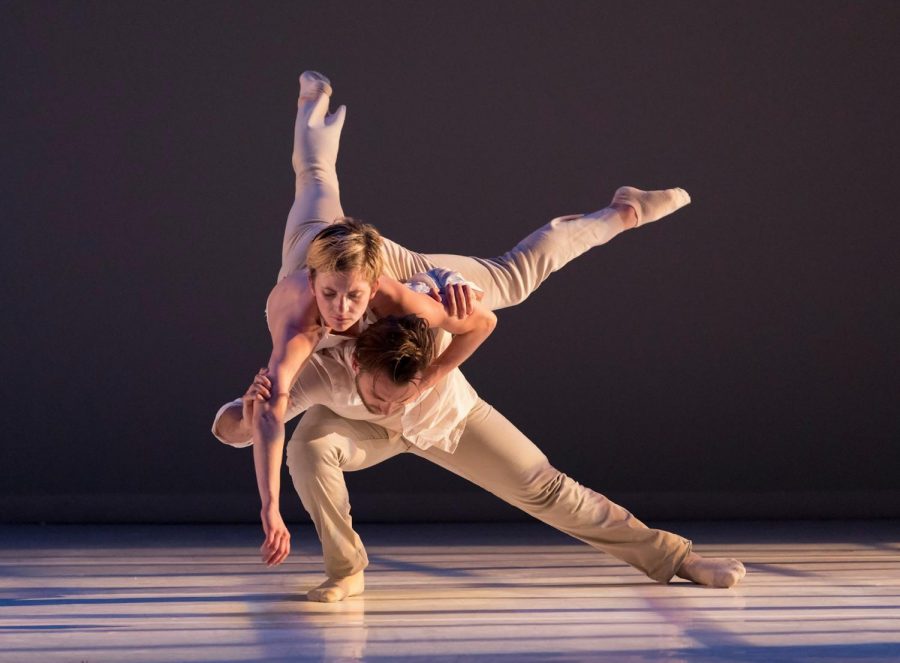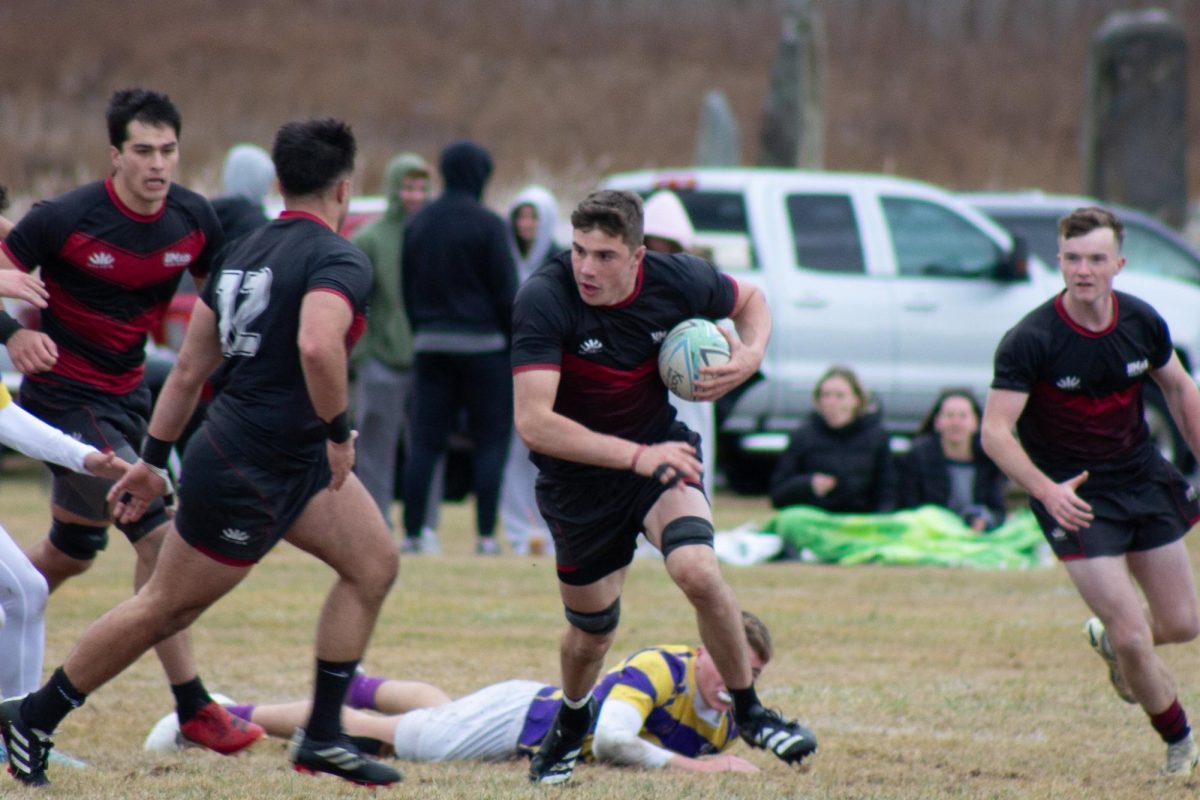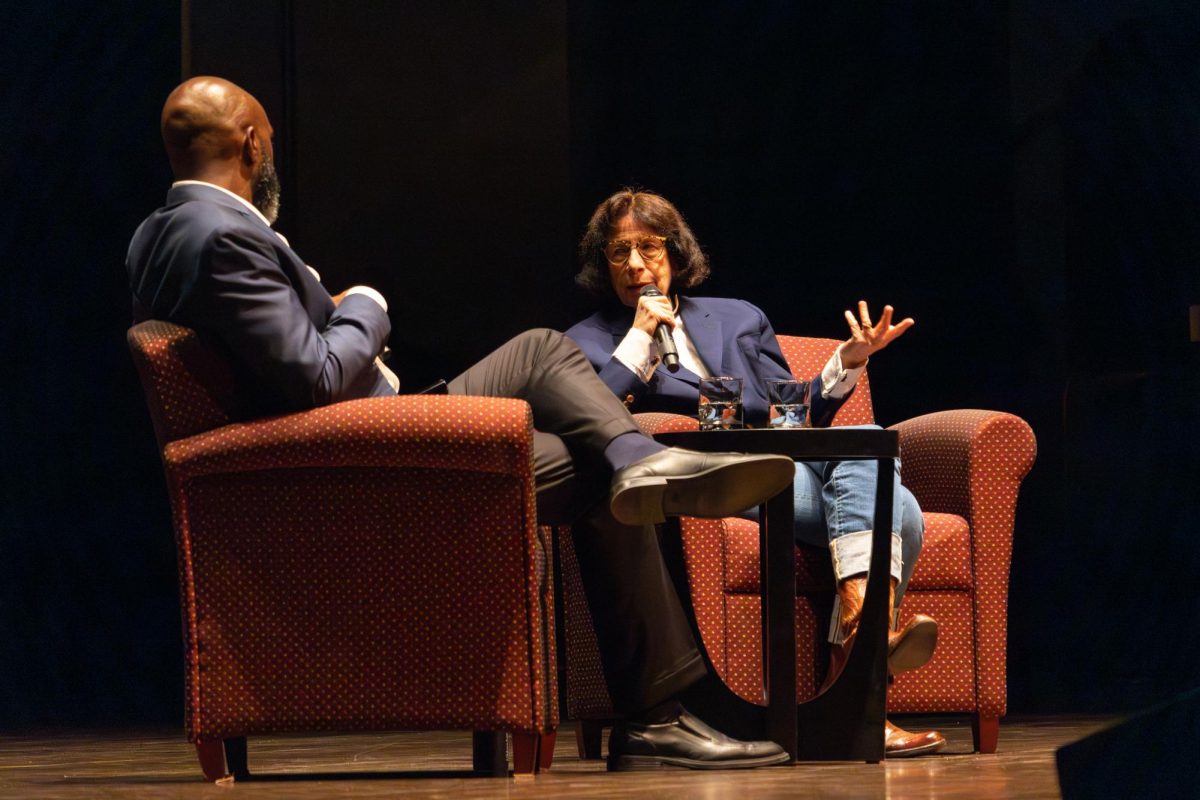In any act of creation, there is an element of risk. Daunting, yes, but when pushed to the right limit and executed with grace, risk translates into new, novel artwork. NW Dance Project, led by choreographer and artistic director Sarah Slipper, made its Amherst debut at the Fine Arts Center on Oct. 30. Unlike many other dance troupes, NW Dance Project stages only new pieces created by choreographers for the company. This allows them to be a “platform for risk-taking.” The night’s triple-bill offered just some of the innovative works unique to the company.
“You Are All I See,” choreographed by Wen Wei Wang, began typically enough, with five bare-chested male dancers and five leotard-clad female dancers. It was when partnering began that this first act came to life. The ensembles were conflicted, embroiling affairs, taut with tension and alive with force. Dancers vacillated between harmony and pugnaciousness. Three men lifted one dancer before them and he fought against them, his body becoming a tumultuous ripple. A previous trio carried out in the same manner: combative, yet desperate in the need for contact. When one dancer broke free of the other dancers’ hold, there was only the briefest of breaths before she launched back into their hands.
“MemoryHouse,” choreographed by Sarah Slipper, possessed a poignancy born from uncertainty—uncertain in the sense of lacking trust in one’s memory. Dancers Andrea Parson and Franco Nieto flexed around each other, deftly manipulating the space around them. Parson, costumed in a white kitchen apron, set a tone of domesticity against an emotional backdrop of yearning. In one moment, she had Nieto in an embrace, only for him to drop out of her hold, leaving her arms a circle of emptiness. This inspired questioning in the audience: Is he truly there? What is she really reaching for? Strikingly, “MemoryHouse” was choreographed with the last few minutes of the piece open to semi-improvisation; Slipper made some suggestions prior to the performance, but the ending is left to the decision of Parson. The result is a piece rich with risk and vulnerability.
Ihsan Rustem’s “Le Fil Rouge” offered a selection of punchy and playful scenes. The first was an ensemble piece; the cast of 10, clothed in black blazers and black shorts, used floorwork to create a percussive, auditorily animated performance. Next, a duet of two men acted out a one-sided relationship set to Doris Day’s “Perhaps Perhaps Perhaps,” which brought laughter from the audience. Their dancing was borderline pantomime; one nudged the other exaggeratedly and they nearly went toppling over. The pursuer, however, got just what he wanted in the end: a quick kiss and a smack on the rump. The laughs continued—a few scenes after that, three women began their dance, only to reveal red lights in their mouths as they lip-synced and moved to Edith Piaf’s “Non, Je Ne Regrette Rien.” The sight of three red orbs winking from the stage was certainly enough to add a comic dimension to the dancing.
Risk is an inherent quality of creating art; Slipper clearly carried that knowledge through her process of creation and direction. Her dancers were versatile, nimble creatures who embodied the comedic, as well as the dramatic. Their boldness, in combination with that of the choreographers, made for a refreshing spirit. Risk-taking takes finesse and vision, and that is exactly what NW Dance Project delivered.
The NW Dance Project will continue their tour in Purchase, New York and Montreal, QC.
Sam Wong can be reached at [email protected].



















